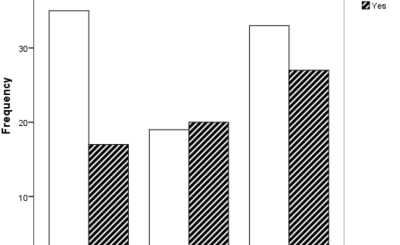Investing in financial markets can be a complex endeavor, particularly when faced with periods of heightened volatility. For Italian investors seeking a disciplined and strategic approach, dollar-cost averaging (DCA) offers a compelling solution.
By systematically investing a fixed amount over time, DCA allows investors to navigate market fluctuations with a long-term perspective, potentially reducing the impact of short-term market swings. Understanding how to apply this strategy effectively in Italian markets can be transformative for both novice and experienced traders alike.
Understanding Dollar-Cost Averaging
Dollar-cost averaging is a methodical investment strategy designed to mitigate the risks associated with market volatility. Instead of investing a lump sum at a single point in time, an investor commits to making regular, fixed contributions to a chosen asset, regardless of its price. This approach can help smooth out the highs and lows of market cycles, as the investor purchases more units when prices are low and fewer units when prices are high.
In the context of the Italian financial market, DCA can be particularly advantageous. Italy’s equity markets, influenced by both domestic economic conditions and broader European trends, often experience periods of rapid price fluctuations. By committing to consistent investments, Italian investors can potentially avoid the pitfalls of attempting to time the market—a practice that even seasoned traders find challenging.
Tailoring Dollar-Cost Averaging to Italian Assets
Applying DCA in Italy requires thoughtful consideration of the types of assets involved. Equities, exchange-traded funds (ETFs), and government bonds each present unique opportunities and challenges. For instance:
- Italian Equities: Popular stocks such as those listed in the FTSE MIB index can experience significant volatility. Regular investment through DCA enables investors to accumulate shares over time, potentially reducing the average cost per share and smoothing the impact of price swings.
- ETFs: Diversified Italian or European ETFs provide exposure to multiple sectors, which can further reduce risk. Implementing DCA with ETFs ensures that investors gradually build exposure to a broad market segment without the pressure of perfect timing.
- Government Bonds: Italian government bonds, while generally less volatile than equities, still benefit from a disciplined approach. DCA can help investors reinvest interest and principal payments consistently, enhancing long-term portfolio growth.
The flexibility of DCA allows investors to adapt their strategy to match personal risk tolerance, investment horizon, and financial objectives. Whether focusing on blue-chip Italian companies, sector-specific ETFs, or fixed-income instruments, the method remains a valuable tool for managing uncertainty.
Practical Implementation in Volatile Periods
Market volatility is a constant in Italian markets, influenced by political developments, macroeconomic indicators, and global events. Implementing DCA effectively during these periods requires careful planning and commitment:
- Set a Fixed Investment Amount: Determine an amount that aligns with your financial capacity and long-term goals. Consistency is key, so selecting an amount that can be maintained through market ups and downs is crucial.
- Establish a Regular Schedule: Choose a frequency for investments, whether monthly, quarterly, or aligned with salary cycles. The goal is to create a habitual, automatic investment pattern that avoids the pitfalls of reactive decision-making.
- Monitor and Adjust: While DCA reduces the need for market timing, periodic reviews are essential. Adjusting contributions in line with life changes, portfolio performance, or market conditions ensures that the strategy remains aligned with evolving financial objectives.
- Maintain Long-Term Perspective: Dollar-cost averaging is most effective as a long-term strategy. Italian investors should focus on sustained growth over months and years, rather than expecting immediate results from short-term market movements.
By adhering to these principles, investors can leverage DCA to navigate Italian market volatility more effectively, building wealth steadily and reducing stress associated with unpredictable market behavior.
Integrating DCA into a Broader Investment Strategy
While DCA offers a robust framework for disciplined investing, it is most powerful when integrated into a comprehensive investment strategy. Italian investors should consider combining DCA with diversification across asset classes, sectors, and geographies. This layered approach not only mitigates risk but also positions portfolios to capitalize on growth opportunities across domestic and international markets.
Moreover, coupling DCA with a regular review of financial goals and risk tolerance ensures that investment decisions remain aligned with long-term objectives. Utilizing professional insights and analytical tools can further enhance the effectiveness of DCA, particularly when navigating complex or volatile market environments.
For those interested in deepening their understanding and practical application of dollar-cost averaging in volatile markets, it is worthwhile to view more resources that provide guidance tailored to specific market conditions, including those in Italy.
Conclusion
Dollar-cost averaging represents a strategic and disciplined approach for Italian investors aiming to navigate market volatility. By systematically investing fixed amounts over time, individuals can reduce emotional reactions, smooth out investment costs, and cultivate a long-term growth mindset.
Whether applied to equities, ETFs, or government bonds, DCA enables investors to maintain consistency, harness the benefits of compounding, and mitigate the risks associated with attempting to time the market.
In the dynamic and often unpredictable Italian financial landscape, the power of DCA lies in its simplicity and reliability. For investors committed to long-term financial objectives, embracing this strategy can transform market turbulence from a source of anxiety into an opportunity for steady portfolio growth.
By combining DCA with diversification, regular reviews, and strategic planning, Italian investors can position themselves to navigate volatility with confidence and achieve sustainable investment success.










